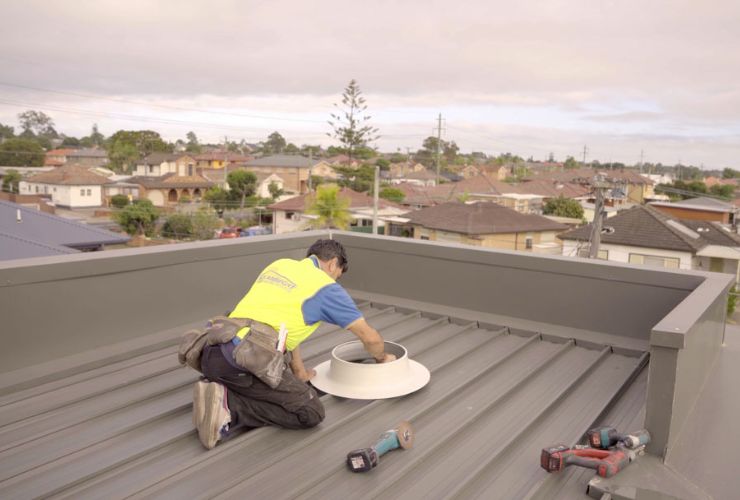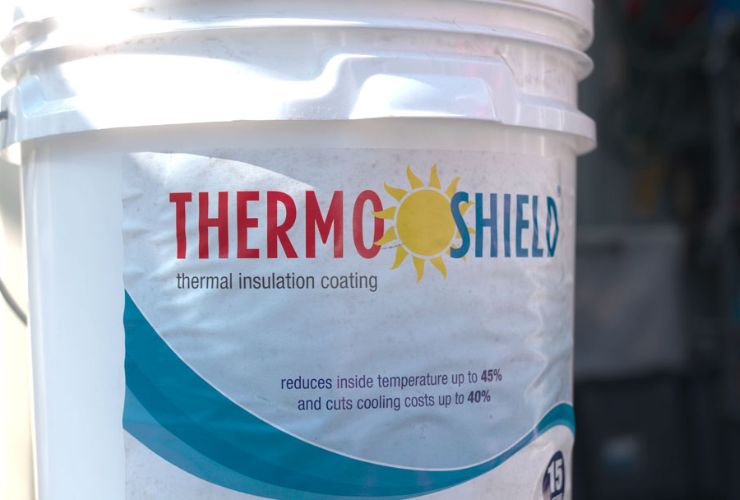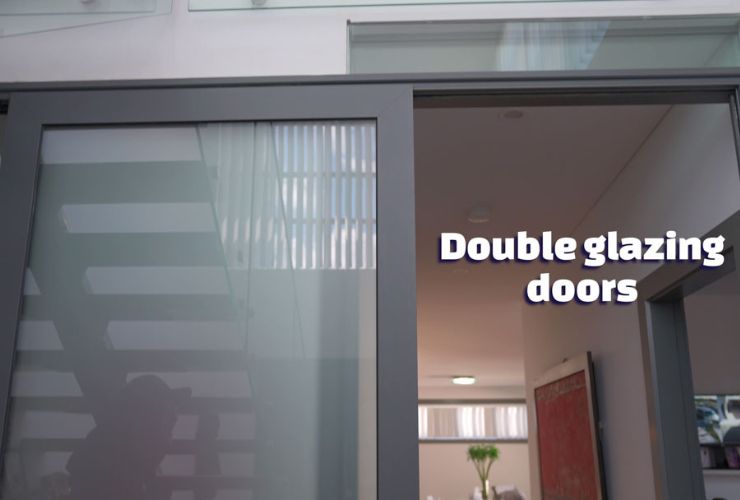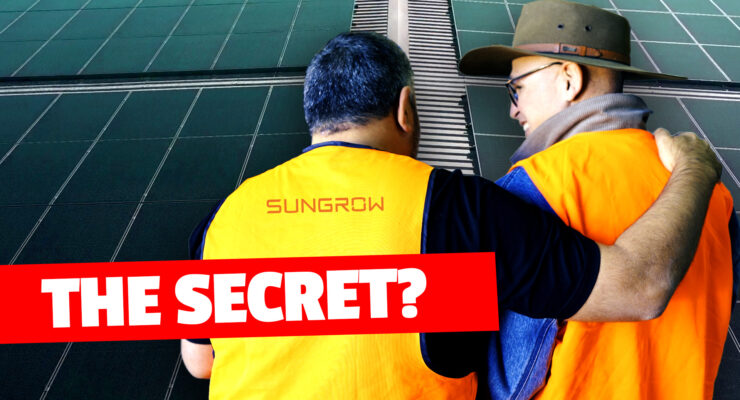
Fast read
Markus shares his experience of retrofitting his hot house to keep it cool in Western Sydney. To address the scorching top floor, he opts for strong whirly birds and a solar vent powered by a solar panel and backup battery.
Window film is applied for heat reduction, while awnings and white roof paint help combat heat absorption. Double glazing and solid doors are installed for better insulation. Markus also plants trees to create a heat sink.
Despite the approximate cost of $30,000, the initiatives significantly improve the house's comfort, reduce cooling costs, and potentially save up to $6,000-$7,000 annually, making it a worthwhile investment.
What to do when your house is too hot?
Markus Lambert, the homeowner, shares his personal experience of dealing with a hot house in Sydney’s West. We join his journey and efforts to find alternative solutions to constantly running the air conditioning to cool his home in the stifling Sydney summer.
He recently purchased a new house in Western Sydney, but the top floor was excessively hot, creating an uncomfortable living environment. Faced with the choice of relying on air conditioning or finding more energy-efficient ways to cool the house, Markus decided to explore various initiatives to address the heat issue.
The primary cause of the excessive heat was the fully exposed black-grey roof. In the scorching summers of Western Sydney, the sun beat down relentlessly on the roof. Causing heat transfer and leading to high temperatures inside the house. Markus recognised that modern house designs often overlook the importance of energy efficiency and fail to consider the comfort of occupants, without relying on excessive energy consumption.
Improvement one – Solar powered whirly birds
To combat the problem, Markus focused on a retrofit approach. He opted to install powerful and efficient solar powered whirly birds on a number of roofs. These devices, specifically chosen for their superior performance, help extract hot air from the roof cavity, even at night.
The solar vent chosen provides equivalent ventilation to approximately 20 regular older-style mechanical whirly birds. Since the location lacked access to power the design of the unit s powers the vent using two small solar panels. One to power the motor during the day and one to charge the battery and run the unit at night.
The whirly bird is programmed only to turn off once the roof cavity temperature falls below 25 degrees Celsius, ensuring ongoing cooling on those hot muggy nights.

Improvement two – solar guard style window film
Another measure Markus implemented was the application of window film, particularly on Western-facing large windows. This film reduces the heat load on the house by blocking a significant portion of solar heat coming from direct sunlight. While still allowing a reasonable amount of visible light transmission, the selected film, Nature 30 by American Standard, offered a 61% heat reduction and still 30% visible light transmission, making the light reduction less noticeable.
Markus inquired about the potential heat reduction, and he learned that depending on the film chosen, heat reduction with some products could reach up to 84%. However, highly heat-reducing films tend to be more reflective, and since Markus wanted to maintain an appealing exterior appearance and a decent light level within the house he chose a film that balanced heat reduction with visual aesthetics.
Improvement three – awnings
Recognising the impact of solar radiation on the house’s temperature, Markus installed awnings above the North facing windows on the ground and first floor. By strategically placing these awnings, he effectively reduced direct sun exposure, onto the windows, resulting in a significant temperature decrease. The awnings provided shade and acted as a physical barrier against the sun’s heat and made a big impact.
Improvement four – Thermoshield paint and its amazing heat-blocking properties
Considering the roof’s dark colour and overall heat absorption, Markus planned to find a way to minimise this heat absorption of his dark roof throughout the home. While on the main home structure, a 30 kW solar system was installed to cover the roof surface, on the granny flat another solution was installed.
He had the roof of the granny flat painted white. The white paint is unique and has heat-absorbing properties. The Thermoshield product claims to lower temperatures by 45% and reduce cooling costs by 40%. The paint contained ceramic balls, which created a protective coating, contributing to its heat-reducing properties.
Markus had already received the paint and proceeded to have it applied to the granny flats’ roof. He acknowledged that, in hindsight, painting the roof of the main house before installing the solar panels would have been the ideal order of operations. However, he speculated that the solar panels also provided some shade, which could assist in mitigating the heat load on the roof.

Improvement five – limiting the open plan design, or why an open plan home design may not always be the best
Markus acknowledged that the house’s open-plan layout, while visually appealing and spacious, posed a challenge to heating and cooling efficiency. To address this, he invested in dividing the home internally with some double glassed partitioning sliding doors and windows.
The double glazing did enhance the internal insulation, of sections of the house, making the portions that would need to heated or cooled at once smaller. By creating a barrier between the interior and exterior environments, Markus was also able to prevent heat transfer. By sectioning off different parts of the house. Markus could focus on heating or cooling efforts where necessary, optimising energy usage and reducing heating and cooling bills.

Improvement six – give me some trees
In addition to these measures, Markus recognised the lack of tree coverage in his area, contributing to increased temperatures. To mitigate this, he decided to plant trees on the footpath, with the necessary permission from the council. He selected a variety of trees, including lily pillies, jacaranda, bottle brushes, and even a mango tree. By creating a “heat sink,” Markus aims to improve the microclimate around his house and beyond. He emphasises the importance of increasing the overall tree coverage in Western Sydney.
Other issues
While Markus couldn’t access the existing insulation in the flat roof, he stressed the importance of good insulation in keeping a house cool. Ideally, he would have liked to enhance the insulation further, but given the encapsulated nature of the existing insulation, he had to work with what was already in place.
Improvement seven – Get solar to run the air conditioning effectively
Markus also emphasised the need for a modern and efficient air conditioning system. Fortunately, his large 30 kW solar system, which he had installed recently allowed him to run the air conditioning guilt-free during hot days. The excess solar energy generated by his system exceeded the power required for cooling, minimising the impact on his electricity bills.
Considering the financial aspects, Markus estimated that the various initiatives would cost approximately $30,000. The expected savings on electricity bills ranged from $3,000 to $4,500 per annum, depending on the solar system’s utilisation during the day. With the potential addition of one or two electric cars and home storage batteries in the future, these savings could reach $6,000 to $7,000 per year, as Markus and his family could save all his petrol costs. Beyond the financial benefits, the listed improvements added significant value to the house, enhancing its livability and comfort.
In summary
Markus concluded his account by expressing his satisfaction with the overall results. Having already experienced a hot season in the retrofitted house, he noticed a remarkable difference in comfort. When returning home or going out on hot days, the house felt significantly cooler and more enjoyable. The previous stickiness and oppressive heat were replaced by a breezy and cool atmosphere. Markus regarded his efforts as a great success, achieving his goal of creating a more comfortable living space while reducing his future electricity bills for good.
Markus’s journey to combat a hot house in Western Sydney involved a range of retrofit initiatives, including installing solar-powered whirly birds, applying window film, adding awnings, painting the roof white, installing a large solar system, implementing double glazing and sliding partitioning doors, planting trees, and emphasising insulation and an efficient air conditioning system.
The combination of all these measures resulted in the creation of a more comfortable and energy-efficient home, significantly improving the overall living experience for Markus and his family, as well as adding value to his property.


